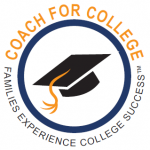What Does 100% Need-Met Mean?
(Updated 10.1.2019)
A school that provides 100% need-met (full-need) offers financial aid that equals the family’s demonstrated financial need; Cost of Attendance (COA) less Expected Family Contribution (EFC).
The family is financially responsible for their expected family contribution. You can save money when you answer this question. How Can I reduce my EFC financial aid?
Full Need-Met Schools Listed By State
California – 11 Schools
- California Institute of Technology
- Claremont McKenna College*
- Harvey Mudd College
- Occidental College
- Pitzer College
- Pomona College*
- Scripps College
- Soka University of America
- Stanford University*
- Thomas Aquinas College
- University of Southern California
Colorado – 1 School
- Colorado College
Connecticut – 4 Schools
- Connecticut College
- Trinity College
- Wesleyan University
- Yale University*
DC – 1 School
- Georgetown University
Georgia
- Emory University*
Illinois – 3 Schools
- Blessing-Rieman College of Nursing
- Northwestern University
- University of Chicago*
Indiana – 1 School
- University of Notre Dame
Iowa – 1 School
- Grinnell College
Maine – 3 Schools
- Bates College
- Bowdoin College*
- Colby College
Maryland – 1 School
- John’s Hopkins University
Massachusetts – 11 Schools
- Amherst College*
- Boston College
- College of the Holy Cross
- Franklin W. Olin College
- Harvard University*
- Massachusetts Institute of Technology
- Mount Holyoke College
- Northeastern University
- Smith College
- Tufts College
- Williams College
Minnesota – 2 Schools
- Carleton College
- Macalester College
Missouri – 1 School
- Washington University, St. Louis
New Hampshire – 1 School
- Dartmouth College
New Jersey – 1 School
- Princeton University*
New York – 8 Schools
- Barnard College
- Colgate University
- Columbia University*
- Cornell University
- Hamilton College
- Skidmore College
- Union College
- Vassar College
North Carolina – 4 Schools
- Davidson College*
- Duke University
- University of North Carolina Chapel Hill
- Wake Forrest University
Ohio – 3 Schools
- Kenyon College
- Oberlin College
- Ohio State University (Starts Fall 2018, Must Meet Full Pell Grant Eligibility)
Oregon – 1 School
- Reed College
Pennsylvania – 6 Schools
- Bryn Mawr College
- Franklin and Marshall College
- Haverford College*
- Lafayette College
- Swarthmore College*
- University of Pennsylvania*
Rhode Island – 1 School
- Brown University
South Dakota – 1 School
- Augustana College
Texas – 1 School
- Rice University
Tennessee – 1 School
- Sewanee: The University of the South
- Vanderbilt University*
Vermont – 1 School
- Middlebury College
Virginia – 4 Schools
- University of Richmond
- University of Virginia
- Washington and Lee University*
* – Without Loans, look for qualifying events such as an income threshold.
DISCLAIMER: This information should only be used in conjunction with other research such as checking with each college to confirm their “current” percentage of need met. Although we periodically we review the list we cannot warrant the accuracy of the aforementioned data.
Understanding “Full Need Met” Colleges and Universities
The amount of financial aid that you might receive is determined based upon four primary factors.
- What is the Total Cost of Attendance (“TCOA”)?
- What is your Family’s Expected Family Contribution (“EFC”)?
- School’s “Percentage of Need Met” (not guaranteed but a guideline)
- Student Profile (Academic and Non-Academic Factors) relative to each school’s enrollment criteria (“student positioning”).
Clarification of the Four Key Factors
1.The Total Cost of Attendance for each College is the aggregate of these individual budget components listed below. The accuracy of this number is important because your EFC number is subtracted from the TCOA resulting in your “demonstrated financial need”, thus the percentage of need met is a percentage of financial need. .
- Tuition and Fees
- Room and Board
- Books and Supplies
- Personal Expenses
- Transportation
2. Your EFC number is calculated from two financial aid forms; the FAFSA (Federal Method – FM) and the CSS PROFILE (Institutional Method- IM). The CSS PROFILE asks more financial questions and differs with how and what is assessed to reach the EFC number. The IM form is required for certain private schools, most families only complete the FAFSA.
There are actually three financial aid methodologies; FAFSA, CSS PROFILE, and Consensus 568 (uses CSS PROFILE form but agrees with about 25 other schools to certain assessment variations to standard CSS PROFILE practices).
The FAFSA EFC number qualifies families for federal funds.
The CSS PROFILE qualifies families for institutional funding, the individual school’s own money.
Most 100% need met schools use both the FAFSA and the CSS PROFILE in their financial aid award calculations.
3. The College you apply for admission and their percentage of need met explained below. Schools may include loans in their financial aid awards and still be considered full need met schools.
![]() [Strategy Alert]: There are 30+ schools that meet 100% financial need met with no loans but there can be restrictions, we explain these toward the bottom of the page.
[Strategy Alert]: There are 30+ schools that meet 100% financial need met with no loans but there can be restrictions, we explain these toward the bottom of the page.
4. A student’s merit or competitive value to the college relative to their student profile is important compared to school’s average freshman school profile (“student positioning”)
EFC Numbers can Vary Among CSS Schools
The FAFSA EFC number calculation is fixed. Once the number is calculated (available on the Student Aid Report) then your family’s EFC number is the same for all schools.
However, CSS PROFILE results will be different from FAFSA because the rules are different. In addition, the EFC number will vary from school to school because these school can establish their own guidelines because they are providing their own money versus FAFSA where federal funding requires strict adherence to federal regulations.
The cost of attendance typically increases from year to year when not considered can catch you off-guard. Here are 7 financial aid mistakes that you should understand.
When you receive your financial aid awards be careful to validate the accuracy of TCOA. There can be discrepancies that can qualify you for additional assistance upon financial appeal.
When the school says it meets “100% need met” the total cost of attendance is an important number as well as your Expected Family Contribution (“EFC number”).
How Your EFC Number Applies to Need Met
The simple formula is the TCOA minus your EFC number yields the amount that your family is expected to pay for college. However, there is a “wild card” thrown in that you must understand.
“Need Met” or Conversely “Unmet Need” Allows You to Project Your Potential “Funding Gap”
Basically your funding gap is your expected family contribution plus the unmet need percentage and any loans that you choose not to accept. Individual financial aid awards can alter this simple definition but the formula can serve you well comparing schools.
This information allows you to determine which colleges might give you more money based upon your EFC number and their published percentage of financial need met.
Total Cost of Attendance $31,640 (“TCOA”)
Your EFC Number $12,540 (“EFC”)
Your family’s funding need TCOA ($31,640) minus your EFC ($12,540) equals $19,100 (“preliminary funding gap”).
EFC or Expected Family Contribution is the amount a student and his or her family are expected to “reasonably” contribute toward the cost of college in determining financial aid eligibility. In the simplistic example above, it would be $19,100.
Schools indicating 100% financial need met would provide a financial aid award of $19,100 (again, simplistic example). The award would usually consist of grants and self-help (loans and possibly work study) although there are some schools that provide awards without loans.
What about schools that don’t meet full need – 100%?
They meet a percentage of the $19,100 (your “financial need”) that results in an “unmet need” shortfall or “funding gap”.
The funding gap becomes an add-on to the EFC $19,100 increasing Total Expected Family Contribution (“TEFC”).
In this example if a college typically meets 70% of need, then that additional funding gap would 30% times the $19,100 which equals $$5,730.
This means that your family out of pocket costs would be your expected contribution of $12,540 plus the funding gap amount of $5,730 which equals $18,270.
Percentage of “Need Met” Comparison between Colleges
Which Schools are Best to Minimize Your “Funding Gap”?
First the student’s “profile value” compared to the college’s “average student profile” can alter the historical reported data for each school (student positioning).
Now, since different schools have different need met historical reported percentages it is important to compare colleges in an “apples to apples” format.
100% full need met schools vary on how they calculate meeting full need especially in the area of grant/loan distribution (and your EFC with CSS Profile/Consensus 568 schools). In other words your EFC calculated number will vary from school to school.
![]() [Strategy Alert]: College Selection Strategy uses software that compares up to 5 Colleges side-by-side per page included in our EFC Tune-UP™ course. The process starts by inputting your financial data into our financial aid calculator and uploading the information into our financial aid software that provides side-by-side report showing key financial metrics for your colleges under consideration.
[Strategy Alert]: College Selection Strategy uses software that compares up to 5 Colleges side-by-side per page included in our EFC Tune-UP™ course. The process starts by inputting your financial data into our financial aid calculator and uploading the information into our financial aid software that provides side-by-side report showing key financial metrics for your colleges under consideration.
- Note, these are projections actual financial awards can be more or less based upon the decisions made inside each school’s financial aid office. However if your award falls well below the school’s average and your student is competitive with the freshman student profile there is a valid reason for an institutional appeal.
Need Based Aid and Non-Need Based Financial Aid
Next, our software informs you on the following information.
- Student Information on returning freshman percentage, graduation rates, amount of debt, and average debt.
- Need-based Aid, required aid forms, number of students who received financial aid, and percentage with aid.
- Aid without Need, number receiving aid, percentage receiving aid, average amount athletic and non-athletic.
Yes, There are Colleges that Meet 100% Need Met with No Loans
There are 30+ colleges that meet 100% financial need without loans in their financial aid awards.
However, some of these programs have restrictions for access based upon criteria such as;
- State residency required (example William and Mary),
- Income ceiling (examples Rice University, Duke University)
- EFC number must be less than a certain number (example, Connecticut College).
100% Need Met Schools that Provide Awards without Loans
Here are 3 more schools in addition to 4 above. You should always check with schools to determine possible restrictions.
- Bowdoin College
- Swarthmore College
- Yale University
See schools with their percentage of need met side-by-side and what the financial aid award might look like with the assumed EFC number. Click to open PDF see detailed comparison 5 schools side-by-side and see their financial need met.
When you reduce your EFC number the reduction usually translates into dollar for dollar increase in financial aid at true 100% need met schools.
Check out Our course EFC Tune-UP Evaluate Percentage Need Met by School
- Project your EFC score.
- Select schools and receive Financial Aid Eligibility reports personalized to your family’s situation.
- Determine Funding Gap (total cost of attendance minus projected financial aid).
- Determine affordability of each school in the selection process.
- Sort out the most generous schools by going beyond need-met to the percentage of students where full-need is met.
- Calculate the home equity assessment amount for each CSS Profile school (Consensus 568 assessment limit to 1.2 times income for all member schools).


 How to
How to